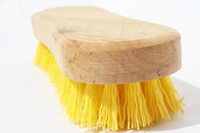
Even in a time of serious belt-tightening, the last thing a multichannel marketer should do is stop marketing. The catalog, the Website, the e-mail campaigns and direct mail efforts are the lifeblood of the business. Without those customer touchpoints, your “stores” are closing.
Multichannel marketers must balance producing cash flow and generating profit — two activities that are often at odds with each other. Faced with the challenge of “doing more with less,” many will look at the single biggest line item in most budgets — postage — for immediate savings.
Sure, if you mail less, you spend less, but you will also generate less. Contribution per piece may be low, but dollars per piece never goes negative. Except for rare occasions, you produce more revenue by mailing more pieces.
Look at the big picture, not just the biggest cost center, and evaluate the entire income statement for opportunities to improve. There are five primary components to the P&L: sales/merchandise, fulfillment, advertising, overhead and operating profit. For now we’ll focus on giving the front-end of the business what we call the P&L scrub.
Sales and merchandise
The sales/merchandise component is affected by response rates, average order values and gross margins, as well as other smaller factors. Response rates are generally affected by promotions (increased costs), greater page counts (increased costs), quality of the active customer file, and timing of the mailing.
You can boost average order values through upsell and cross-sell initiatives, as well as via well-constructed substitution programs for filling orders when inventory begins to run out on popular or under-planned items. Bundles and add-ons make AOV increases manageable and valuable to the company and customers alike.
And you can improve your gross margin by working with vendors or manufacturing to drive costs down. Can you increase prices to customer? Yes, but pricing must still show value and be centered on psychological price points. Otherwise, you risk alienating customers and driving down sales — and increasing inventory costs inadvertently.
Finally, don’t lose sight of the importance of good forecasting. Using a forecasting technique that allows you to more tightly control inventory is crucial during tight times. The last place you want to have your cash tied up is in unopened crates in your warehouse.
Advertising
Outside of cost of goods, advertising is the single largest cost center on the income statement. As a rule, advertising costs should not exceed 25% to 30% of sales, but over-controlling these costs can produce a downward spiral if not executed correctly.
How do you control advertising expenses? Reducing catalog page counts can bring savings in paper expense and, if your current book is over the 3.3 oz. weight basis, some postal savings as well. But the hard truth is that the cost of mailing catalogs is and will continue to be significant.
Saving money in the mail without producing a significant decrease in sales is a function of segmenting for the most efficient sales. Only through long-term testing will you change your marketing paradigm and arrive at the right combination of e-mail campaigns and catalog mailings.
By testing timing (seasonality), page count, product mix, frequency and depth of mailings, you will arrive at an ideal combination of marketing communications that includes both catalog/direct mail and e-mail campaigns to drive down costs and maintain comparable sales levels.
Operating profit
Cataloging and multichannel marketing has, for the most part, always been a “slow and steady as you go” business model. Profits as a percent of sales were on the smaller side, but generally reliable given the formulaic nature of the direct marketing model.
Today, rising costs and smaller average order values mean that operating profit margins are getting thinner. Owners and shareholders are quickest to look for ways to drive sales up, improve response rates and shore up costs. But you often have to revise expectations as well.
It’s probably time for a fresh perspective on the business. You likely need to focus on starting with higher margins, selling with more efficient marketing pieces and reaching the right customers at the right time.
Steve Trollinger ([email protected]) is executive vice president of J. Schmid & Associates, a Mission, KS-based consultancy.